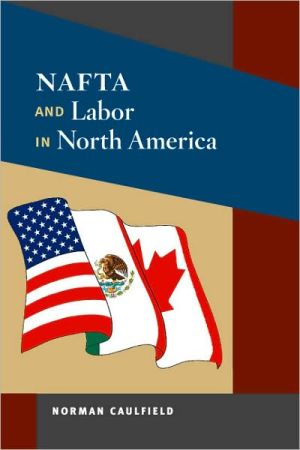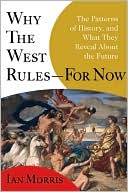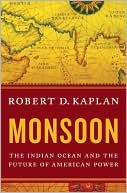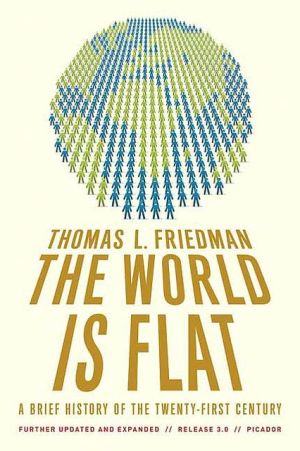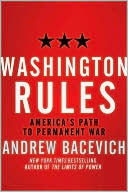NAFTA and Labor in North America
As companies increasingly look to the global market for capital, cheaper commodities and labor, and lower production costs, the impact on Mexican and American workers and labor unions is significant. National boundaries and tha laws of governments that regulate social relations between laborers and management are less relevant in the era of globalization, rendering ineffective the traditional union strategies of pressuring the state for reform.\ Focusing especially on the effects of the North...
Search in google:
A cogent analysis of North American trade unions' precipitous decline in recent decades.
NAFTA and Labor in North America\ \ By NORMAN CAULFIELD \ UNIVERSITY OF ILLINOIS PRESS\ Copyright © 2010 Board of Trustees of the University of Illinois\ All right reserved.\ ISBN: 978-0-252-03492-3 \ \ \ Chapter One\ Labor and Global Capitalism in North America, 1850–1970 \ When the 1848 revolutions of Western Europe removed the remaining feudal roadblocks to economic expansion, Britain, through the use of its military and naval might, not only knocked down barriers to its expansion, but in so doing provided the basis for the expansion of capitalism in other nations. As the world's preeminent capitalist power, Britain advocated free trade and the freeing up of labor everywhere. In North America, British investment in railroads and other capital ventures provided important traction for the growth of capitalism on the continent and with it the expansion of national and regional labor markets based on the principle of free-wage labor.\ In the United States, the Civil War had a profound impact on these developments, and following the North's victory, the nation experienced an unprecedented economic expansion. With slavery and the political challenges of the southern aristocracy swept away, northern industrial and financial elites used their control of the state machinery to carry out measures to promote industrial expansion by subsidizing the construction of railroads and other internal improvements. At the same time, they enacted protective tariffs and established a national banking system.\ In 1873 when this rapid economic expansion halted and turned downward, a series of financial crises erupted that affected the entire capitalist world. In response to enormous downward pressure on profits, capitalists the world over looked for ways to restore profitability by developing new production methods through innovation, longer working hours, and the acquisition of new labor markets. In the United States especially, while all of these factors came into play, it was the development of new forms of industrial organization and technologies resulting in innovative production methods that proved most important. These changes boosted labor productivity to unprecedented heights. The 1913 opening of Henry Ford's Highland Park, Michigan, assembly-line car plant represented the culmination of this process.\ Among the European countries, the downward pressure on profits precipitated a renewed scramble for colonies among the great powers, a process reflected by the carving up of Africa and China in a twenty-year period. This weakened the relative position of Britain internationally and marked the beginning of the decline of British global hegemony. Although the success of the American economy took place within tariff walls, the United States entered the competitive world stage in this period under the banner of the "open door." In contrast to European efforts to obtain colonies, open-door policy reflected the emerging industrial and economic superiority of the United States over its rivals, just as Britain's free-trade agenda in the nineteenth century expressed the domination of British industry.\ Another major factor driving this economic dynamism was that regions of the world were pulled into the capitalist orbit of production, made possible by new forms of transport and communications. Minerals and raw materials, such as rubber, copper, lead, iron ore, and zinc were all transported in bulk to be processed in factories. In North America, the construction of extensive railroad networks allowed for the opening up of the mineral-rich Canadian west and northern Mexico. By 1895, the ability to secure quantities of these commodities at lower costs had helped generate another round of global capitalist expansion that lasted until the outbreak of World War I. Output per capita for the advanced industrial countries doubled between 1895 and 1913 from what it had been during the previous fourteen years. At the same time, the United States emerged as the world's leading manufacturer, surpassing its leading rivals, England, Germany, and France.\ Rising rates of profit resulting from this economic output led to significant growth of foreign investment abroad by U.S. industrialists and bankers. Much of that investment found its way to Canada. The country possessed material power in the form of industry-serving minerals and power-generating rivers, a factor that helped Canada become the recipient of around 33 percent of U.S. direct investment. Also attracting investment was the national policy implemented during Canada's transition to Dominion status within the emerging British Commonwealth system. Its key components were the launching of an import substitution-industrialization strategy with railway construction to connect eastern and central Canada with the western provinces, immigration aimed to attract labor to work in industries, and tariffs to induce foreigners to develop a manufacturing economy in Canada.\ The result was that American corporations like General Electric, Westinghouse, and National Cash Register set up Canadian operations. These multi-entity corporations exercised head-office control over their subsidiary operations (both factories and mines) without giving up their ownership rights. Consequently, American investors retained control while they increased their share of Canada's burgeoning manufacturing and resource economy. By 1900, Canada had become the world's first branch-plant economy.\ This early domination of Canada's industrial base benefited the American economy in several ways. While Canada gradually detached itself from the British Empire, the United States discouraged the nation's capacity to compete with American firms through tariff walls against its manufactured exports. Functioning like an appendage of the American economy, Canada would supply resources, help integrate U.S. capital markets, and offer a consumer market for American firms to gain economies of scale.\ These economic changes also created the beginnings of a North American labor market. While the process began drawing many of Canada's marginal farmers and fisherman into wage labor for the first time, the increased integration of the Canadian and American economies began generating continental labor mobility. English- and French-speaking Canadians migrated to work in Detroit and in the textile and shoe factories of New England. Montreal acted as a temporary passageway for many European-born workers headed to the United States, especially to New York. The accelerated economic development of the United States also began drawing Mexicans to the western and southwestern regions of the United States to work on the railroads, in the mines, and on farms.\ While some of these new arrivals and their native-born American counterparts improved their standard of living in this period, periods of unemployment caused by shifting seasonal demands, boom-and-bust cycles, and depressions often offset the gains. Economic insecurity and unsafe conditions on the job combined to generate a wave of labor unrest marked by great, dramatic, and often bloody and violent strikes such as Homestead (1892) and Pullman (1894). As employers backed by the state's armed intervention crushed these struggles, sharp ideological conflict and divisions emerged within the U.S. workers' movement.\ In the late 1880s and early 1890s, the two competing ideological tendencies were represented by the Knights of Labor and the American Federation of Labor (AFL). Beginning in Philadelphia in 1869, the Knights drew on craft traditions and organization but sought to unite workers regardless of trade, skill level, or social background. Recognizing that factories often employed large numbers of both skilled and unskilled labor, women as well as men, and workers of many ethnic backgrounds, the Knights attempted to span the traditional divisions based on skill, gender, ethnicity, and region by recruiting wage earners of all kinds. By the late 1880s, the Knights had a membership of 730,000. Many anarchist and other workers' groups shared this same outlook, and they, like the Knights, were swept up in the repressive environment directed against labor radicals of all tendencies that followed the 1886 Haymarket affair. The repression, combined with internal factionalism, crippled the Knights, and by the mid-1890s they had ceased to exist in the United States.\ In contrast to the Knights, the AFL and its president, Samuel Gompers, sought accommodation with capitalism, believing that employers would tolerate unionism if it was limited to the skilled trades, rejected militancy, and was reasonable in its demands. Unlike the Knights, the AFL was implacably hostile to blacks, immigrants, female labor, and many other oppressed sections of the working class. But the AFL's promotion of what became known as business unionism, which favored pursuit of workers' immediate demands like better working conditions, wages, and control over jobs, appealed to industrial unions as well. The United Mine Workers (UMWA), International Ladies' Garment Workers' Union, and the United Brewery Workers made up the bulk of AFL membership. As a result, from 1897 to 1904, union membership in the United States climbed from 447,000 to 2,072,700. In the same period, the number of international unions affiliated with the AFL rose from 58 to 120.\ Although the AFL emerged as the predominant labor organization in the United States, many groups of workers had become disenchanted with its outlook. In a June 1905 convention held in Chicago, two hundred socialists, anarchists, and radical trade unionists from all over the United States formed the Industrial Workers of the World (IWW). The IWW opposed the AFL union model and its exclusionary policies that included the refusal to organize many unskilled immigrants. Unlike the AFL, the IWW refused to sign contracts, which it claimed restricted the only real leverage workers possessed: the power to strike.\ While promoting industrial actions and sympathy strikes to affect immediate changes in the workplace, the IWW envisioned the eventual carrying out of a general strike as the means by which the wage system would be overthrown. The new order would resemble a type of collective commonwealth run by workers from syndicates organized on the workshop floor. This idea was called revolutionary syndicalism, and the IWW goal was to spread it worldwide. Although the IWW eventually extended itself into all of North America, the AFL was the first to establish itself as an international union in the region.\ When U.S. firms began moving into Canada, many workers looked to American-based international unions for support. In the 1880s, many Canadian workers linked up with the Knights of Labor, who by organizing almost every conceivable craft eventually established central organizations at both local and national levels. In 1886, these organizations formed the Trades and Labor Congress (TLC). In 1901, the TLC had nearly 88 percent of all Canadian union locals in its ranks, many of which were affiliated with the AFL. In 1902, when the TLC expelled all organizations that it considered rival or "dual unions," the Knights faded into oblivion.\ Even though the TLC also expelled some unions linked organizationally to the AFL, the U.S.-based Federation continued to have a strong influence in Canada, especially among skilled workers. In 1902, membership in Canadian unions affiliated with the AFL included carpenters, bricklayers, printers, shoe workers, iron molders, and mine workers. All of these international unions were headquartered in the United States, along with their AFL parent affiliate. Traveling cards provided by the internationals allowed Canadian workers belonging to 1,000 local unions to cross the border back and forth in search of jobs, contributing to the growth and development of a North American labor market.\ This expanding labor market also led to the emergence of autonomous unions. From 1890 to 1914 in the far western provinces of Canada, where many workers from the United States arrived, miners organized local unions affiliated with the IWW. Although the IWW succeeded in organizing dozens of locals and waging a number of important strikes, especially among immigrant workers in the construction camps of the Canadian Northern Railway, its ideological and organizational influence in Canada remained much weaker in comparison to that of the AFL. Limiting the influence of both the IWW and the AFL was the growth of a different form of unionism in Quebec. There, autonomous unions influenced by papal encyclicals and nationalism sprang up under the fostering care of the Catholic Church hierarchy. In 1921, these unions formed the Confédération des Travailleurs Catholiques du Canada/ Canadian and Catholic Confederation of Labor (CCCL).\ As union membership grew, labor leaders and workers became more assertive during disputes with employers. As the eruption of strikes became more common, some provincial government officials searched for ways to prevent work stoppages and promote peaceful industrial relations. In 1905, the Alberta provincial government brought in a series of reforms, including the eight-hour workday. In 1907, the federal government, at the instigation of Mackenzie King, the deputy minister of labor, sought to discourage strikes in industries deemed of national importance, such as coal mining. The result was the passage of the Industrial Disputes Investigation Act, which recognized the rights of both sides in labor disputes and established a mandatory period of conciliation and negotiation before a legal strike could start.\ War, revolution, and Labor in North America\ Mexico's entrance into the geopolitical and economic orbit of its northern neighbor began in the 1850s, after war with the United States resulted in the loss of more than half of its territory. What followed that conflict was civil war in Mexico over attempts by liberals to break up ecclesiastical property holdings and the communal lands of Indians. Their eventual victory in that struggle effectively dispossessed peasants from their lands. This created a new pool of labor for capitalists, both domestic and foreign, setting the stage for an unbridled capitalist expansion.\ This expansion accelerated when Porfirio Díaz reigned over Mexico as dictator from 1876 to 1911. During what is called the Porfiriato, American industrialists and financiers played a dominant role in the modernization of the country's economy, making the nation ever more dependent on American capital. Through the granting of territorial concessions, the lowering and removing of tariffs and other financial barriers, the Mexican government opened the floodgates for U.S. business. American capital provided numerous U.S.-owned firms with funds to build railroads, excavate mines, exploit oil fields, establish factories, and develop commercial agriculture.\ By 1910, American investors controlled a substantial portion of the Mexican economy and foreign concerns owned more than half of the nation's wealth. According to then–U.S. Consul General Andrew D. Barlow, more than 1,100 U.S.-based companies and individuals had invested more than $500 million in Mexico. Firmly integrating Mexico with the development of American capitalism were businesses like Standard Oil and International Harvester and wealthy individuals such as William Randolph Hearst. During the first decade of the twentieth century, almost 40 percent of all foreign investment from the United States went into Mexico.\ But the American enterprises that penetrated Mexico were mere foreign enclaves nailed into an economic system in which precapitalist social relations still prevailed. Notwithstanding, the onslaught of American capital disrupted these social relations in vast areas of the nation. The result was a tearing apart of the precapitalist social fabric that produced mass removal of peasants from lands, the ruin of artisans, rising unemployment, and the emergence of a migratory surplus population. This migratory population first moved from rural to urban areas within central Mexico, but thereafter many followed higher pay by pushing into the northern Mexican states, and some even began crossing the border to work in the United States.\ Many of those who crossed into the United States had worked in the mines and on the railroads inside Mexico. After arriving in the United States, some came into contact with radical unions like the Western Federation of Miners (WFM) and later the IWW. As documented by labor historian Emilio Zamora, in Texas alone roughly 50 to 75 percent of migrants returned to Mexico every year. Many workers involved in this cross-border flow also had been influenced by the exiled anarchist opponents of the Díaz government, Ricardo and Enrique Flores Magón, members of the Partido Liberal Mexicano/Mexican Liberal Party (PLM). For Mexican workers, the PLM provided the initial linkages both ideologically and organizationally on both sides of the border for taking up the fight against the abusive management practices of multinational enterprises.\ (Continues...)\ \ \ \ \ Excerpted from NAFTA and Labor in North America by NORMAN CAULFIELD Copyright © 2010 by Board of Trustees of the University of Illinois. Excerpted by permission of UNIVERSITY OF ILLINOIS PRESS. All rights reserved. No part of this excerpt may be reproduced or reprinted without permission in writing from the publisher.\ Excerpts are provided by Dial-A-Book Inc. solely for the personal use of visitors to this web site. \ \
Introduction 11 Labor and Global Capitalism in North America, 1850-1970 92 The Politics of Mexican Labor and Economic Development in Crisis 403 Mexican Labor and Workers' Rights under NAFTA and NAALC 654 Labor Mobility and Workers' Rights in North America 905 The Crisis of Union-Management Relations in the United States and Canada 1126 The North American Auto Industry: The Apex of Concessionary Bargaining 1427 VEBA Las Vegas! Unions Play Casino Capitalism: Autoworkers Lose 166Conclusion 189Notes 197Index 233
